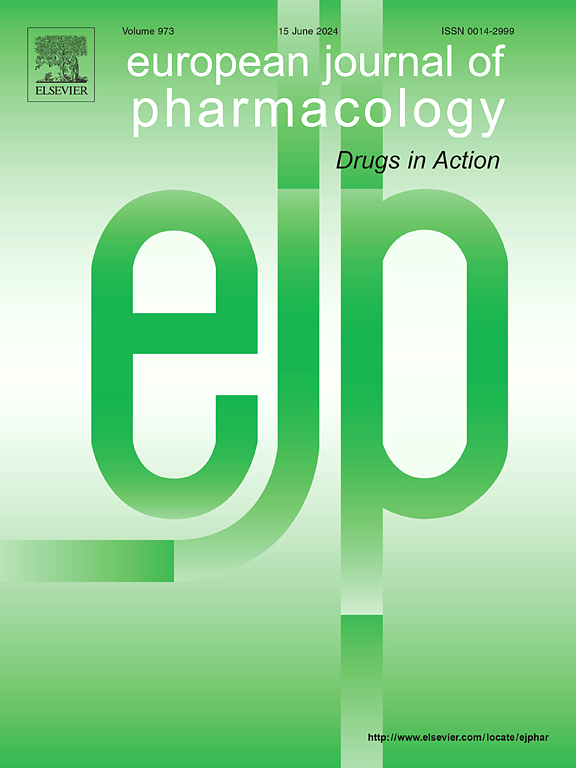Tyrosol protects RPE cells from H2O2-induced oxidative damage in vitro and in vivo through activation of the Nrf2/HO-1 pathway
IF 4.2
3区 医学
Q1 PHARMACOLOGY & PHARMACY
引用次数: 0
Abstract
Oxidative stress-induced damage to the retinal pigment epithelium (RPE) is a critical factor in the pathogenesis of age-related macular degeneration (AMD). Tyrosol is a phenolic compound with antioxidant properties, but its protective effect against oxidative stress-induced AMD and its underlying mechanisms are unknown. The aim of this study was to investigate the protective effects of tyrosol on hydrogen peroxide (H2O2)-induced retinal damage and demonstrate its underlying mechanisms in ARPE-19 cells and C57BL/6J mice retinas. We found that tyrosol significantly enhanced the survival of ARPE-19 cells under H2O2-induced oxidative stress in a concentration-dependent manner. It effectively attenuated the production of reactive oxygen species (ROS) and lipid peroxides, while also counteracting the associated reduction in glutathione (GSH) concentration and superoxide dismutase (SOD) activity. Furthermore, pretreatment with tyrosol ameliorated apoptosis-related damage in ARPE-19 cells induced by H2O2 and normalized the levels of apoptosis-related proteins. Notably, tyrosol significantly upregulated the expression of nuclear factor erythroid 2-related factor 2 (Nrf2) and its downstream antioxidant enzymes heme oxygenase-1 (HO-1) and NADPH dehydrogenase quinone 1 (NQO1). Interestingly, in vivo study demonstrated that tyrosol administration effectively improved retinal function and morphology in H2O2-exposed mice, restored the thickness of the outer nuclear layer and inner core layer, and normalized the expression of proteins Bax, cleaved caspase-3, and Nrf2, which was consistent with the results of in vitro experiments. Overall, our findings suggest that tyrosol can protect RPE cells from oxidative stress damage by activating the Nrf2/HO-1 pathway, which may be a promising new strategy for the treatment of AMD.

求助全文
约1分钟内获得全文
求助全文
来源期刊
CiteScore
9.00
自引率
0.00%
发文量
572
审稿时长
34 days
期刊介绍:
The European Journal of Pharmacology publishes research papers covering all aspects of experimental pharmacology with focus on the mechanism of action of structurally identified compounds affecting biological systems.
The scope includes:
Behavioural pharmacology
Neuropharmacology and analgesia
Cardiovascular pharmacology
Pulmonary, gastrointestinal and urogenital pharmacology
Endocrine pharmacology
Immunopharmacology and inflammation
Molecular and cellular pharmacology
Regenerative pharmacology
Biologicals and biotherapeutics
Translational pharmacology
Nutriceutical pharmacology.
文献相关原料
公司名称
产品信息
索莱宝
MTT

 求助内容:
求助内容: 应助结果提醒方式:
应助结果提醒方式:


